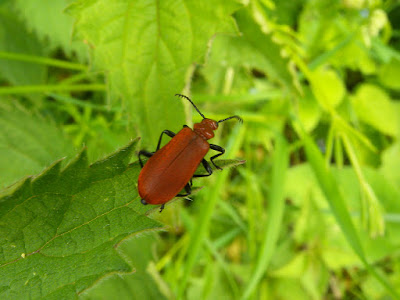We are blessed in Shropshire with having a number of entomologists who are not only highly capable, but also happy to receive photographs and help to identify difficult species. Among their number is Pete Boardman, who whilst I have only met once had been full of support and ready to respond to entomological questions, particularly when it comes to craneflies.
When I returned from Pembrokeshire on 10 May, I noticed a cranefly on the side of the house. It looked different, so I took a couple of photographs with a view to sending them to Pete. Yesterday I finally got around to going through my recent pictures and sent them off to him. The reply came back very quickly.
"That's Triogma trisulcata - one of the Cylindrotomidae (long bodied craneflies) and it is NEW TO SHROPSHIRE :-) Fantastic stuff, it's a species I had hoped would turn up. If you look on the NBN Gateway you'll see it isn't a particularly common species in the Midlands"
 |
| Triogma trisulcata |
 |
| Triogma trisulcata |















































